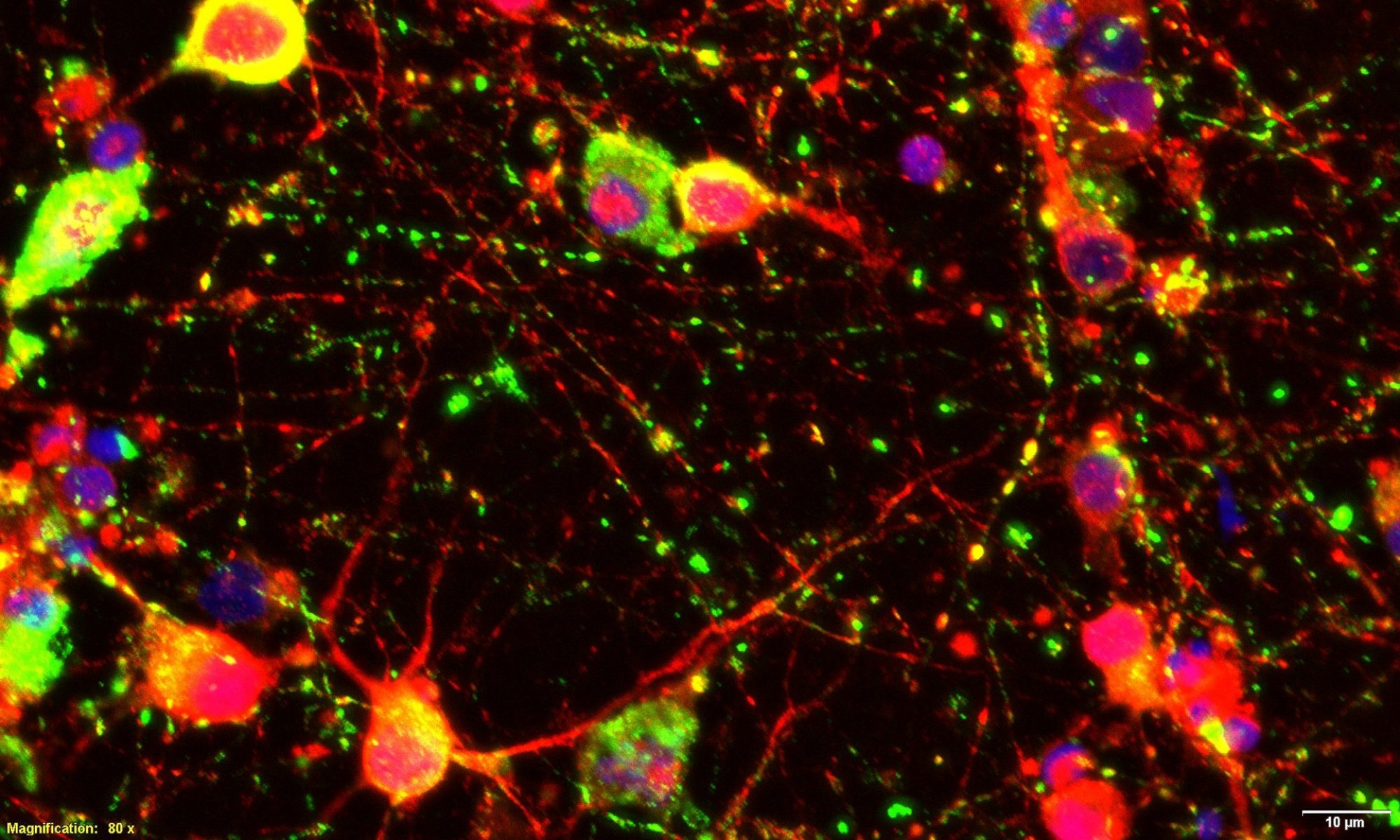
Dr. Charlene Smith, PhD
Project Scientist
Charlie
Background & Interests:

I have wanted to study Huntington’s disease since I was an undergrad at Cardiff University, where I had a lecture about genetic diseases. The fact that the gene had been discovered over 10 years earlier and there was still no disease modifying treatment made me want to contribute to finding a therapeutic target that could benefit the patients. One year later, I applied at Cardiff University to study for my PhD working with stem cells. I joined the labs of Prof Paul Kemp and Prof Nicholas Allen, who were working on Huntington’s disease with the CHDI and using stem cells to model the disease in a dish. At the time, we were focused on developing a protocol to make medium spiny neurons (MSNs), the cell type most overtly affected by HD, and I spent my PhD helping the lab devise a differentiation protocol (Telezhkin et al., 2016). My specific project involved the forced expression of transcription factors, which are found in the MSNs, to aid specification and differentiation of these more mature neurons. By the end of my PhD, I had not really worked on HD, and so I applied for a postdoc in Prof Leslie Thompson’s lab. Five years later, I am now an assistant project scientist in the lab and I have worked on many projects, including studying the affect of knocking down PIAS1, a SUMO E3 ligase, on HD iPSC-derived neurons using CRISPR/Cas9 technology, I am using these PIAS1 knockdown stem cells to generate neuronal organoids, to better characterize the effect of this knockdown. I have also worked on a collaborative project with the Fraenkel lab at MIT, using epigenetic approaches to define the differences between control and HD neurons (Smith-Geater* & Hernandez et al*., 2020). Finally, I have been working on an additional collaborative project with the Chiu lab at Stanford University, where we use cryo electron tomography to identify structures within iPSC-derived neurons, with the hypothesis that HD neurons will look different to unaffected controls.
Outside the lab, I like to go running, hiking and camping (with my three dogs and partner) and we enjoy brewing our own beer!
Publications:
- Smith-Geater C*, Hernandez SJ*, Lim RG, Adam M, Wu J, Stocksdale JT, Wassie BT,
Gold MP, Wang KQ, Miramontes R, Kopan L, Orellana I, Joy S, Kemp PJ, Allen ND,
Fraenkel E, Thompson LM. Aberrant Development Corrected in Adult-Onset
Huntington’s Disease iPSC-Derived Neuronal Cultures via WNT Signaling Modulation.
Stem Cell Reports. 2020 Mar 10;14(3):406-419. doi: 10.1016/j.stemcr.2020.01.015.
Epub 2020 Feb 27. PubMed PMID: 32109367; PubMed Central PMCID: PMC7066322. - Gao R, Chakraborty A, Geater C, Pradhan S, Gordon KL, Snowden J, Yuan S,
Dickey AS, Choudhary S, Ashizawa T, Ellerby LM, La Spada AR, Thompson LM, Hazra
TK, Sarkar PS. Mutant huntingtin impairs PNKP and ATXN3, disrupting DNA repair
and transcription. Elife. 2019 Apr 17;8. pii: e42988. doi: 10.7554/eLife.42988.
PubMed PMID: 30994454; PubMed Central PMCID: PMC6529219. - Geater C, Hernandez S, Thompson L, Mattis VB. Cellular Models: HD
Patient-Derived Pluripotent Stem Cells. Methods Mol Biol. 2018;1780:41-73. doi:
10.1007/978-1-4939-7825-0_4. Review. PubMed PMID: 29856014. - Grima JC, Daigle JG, Arbez N, Cunningham KC, Zhang K, Ochaba J, Geater C,
Morozko E, Stocksdale J, Glatzer JC, Pham JT, Ahmed I, Peng Q, Wadhwa H,
Pletnikova O, Troncoso JC, Duan W, Snyder SH, Ranum LPW, Thompson LM, Lloyd TE,
Ross CA, Rothstein JD. Mutant Huntingtin Disrupts the Nuclear Pore Complex.
Neuron. 2017 Apr 5;94(1):93-107.e6. doi: 10.1016/j.neuron.2017.03.023. PubMed
PMID: 28384479; PubMed Central PMCID: PMC5595097. - Kemp PJ, Rushton DJ, Yarova PL, Schnell C, Geater C, Hancock JM, Wieland A,
Hughes A, Badder L, Cope E, Riccardi D, Randall AD, Brown JT, Allen ND, Telezhkin
V. Improving and accelerating the differentiation and functional maturation of
human stem cell-derived neurons: role of extracellular calcium and GABA. J
Physiol. 2016 Nov 15;594(22):6583-6594. doi: 10.1113/JP270655. Review. PubMed
PMID: 27616476; PubMed Central PMCID: PMC5108907. - Telezhkin V, Schnell C, Yarova P, Yung S, Cope E, Hughes A, Thompson BA,
Sanders P, Geater C, Hancock JM, Joy S, Badder L, Connor-Robson N, Comella A,
Straccia M, Bombau G, Brown JT, Canals JM, Randall AD, Allen ND, Kemp PJ. Forced
cell cycle exit and modulation of GABAA, CREB, and GSK3β signaling promote
functional maturation of induced pluripotent stem cell-derived neurons. Am J
Physiol Cell Physiol. 2016 Apr 1;310(7):C520-41. doi: 10.1152/ajpcell.00166.2015.
Epub 2015 Dec 30. PubMed PMID: 26718628.
